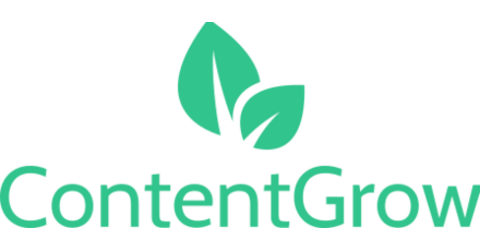Eliminate Martech redundancies by streamlining your technology stack
Streamline your marketing stack with practical steps and modern SalesTech tools.

Martech, short for marketing technology, empowers businesses to deliver data-driven, automated marketing campaigns. However, an overabundance of tools can lead to inefficiencies, duplications, and workflow bottlenecks. Optimizing your Martech stack is essential for maintaining productivity and ensuring seamless operations.
As the number of Martech solutions has surged from 150 in 2011 to approximately 9,500, recent studies highlight the challenges of managing an expanding martech stack. Gartner reports that marketers utilize only 42% of their martech stack capabilities, a decline from 58% in 2020, indicating underutilization and potential inefficiencies.
A Martech bottleneck occurs when redundant or underutilized tools create inefficiencies that slow campaigns and decrease their effectiveness. For instance, multiple CRM systems may lead to data inconsistencies, while tools lacking integration capabilities often require manual data transfers, wasting time and resources. These issues disrupt workflows and hinder the execution of impactful marketing strategies.

Conducting a Martech audit: your first step
A Martech audit provides a clear overview of your tools and their functionality. Follow these steps:
1. Identify all tools
List every platform your team uses, including CRM systems, email marketing tools, social media platforms, and analytics software.
2. Categorize functions
Group tools based on their purposes—content creation, analytics, customer engagement, etc.—to identify overlaps.
3. Assess usage
Evaluate each tool’s frequency and effectiveness of use, noting those that are underutilized.
4. Analyze integrations
Identify tools that fail to integrate seamlessly, leading to inefficiencies.
5. Document findings
Summarize your audit with recommendations for optimization, consolidation, or elimination.
After identifying redundancies, take the following steps to streamline your Martech stack. Start with integration, ensuring all tools are seamlessly connected to enable smooth data flow and reduce manual tasks. Next, implement automation to handle repetitive activities like email follow-ups and data entry, freeing your team to focus on strategic initiatives.
Centralizing data and processes onto a single platform further simplifies management, improves accuracy, and supports better decision-making. Regular audits are essential to continuously identify inefficiencies and adapt to emerging technologies. Finally, invest in thorough training so your team can fully leverage the potential of your optimized Martech stack. These strategies will enhance productivity and create a more effective marketing operation.

Integrate SalesTech to prevent bottlenecks: your second step
Modern SalesTech tools, which are technologies designed specifically to enhance sales processes, can complement your Martech stack by offering real-time insights, enhanced automation, and improved personalization. Here’s how they help:
- AI-powered CRM systems
Advanced CRM systems like Salesforce Einstein leverage artificial intelligence to provide actionable insights into customer behavior, preferences, and engagement. These tools integrate seamlessly with other platforms in your stack, ensuring a unified approach to managing customer relationships while streamlining workflows and enhancing data accuracy.
- Chatbots for automation
AI-driven chatbots can improve customer interactions by automating responses to common queries, providing information, and offering support without the need for human intervention. This not only reduces the workload on your sales and support teams but also ensures prompt and efficient communication, improving customer satisfaction and engagement.
- Predictive analytics for strategic insights
Platforms such as Tableau utilize predictive analytics to analyze historical data and anticipate future customer behaviors or market trends. These insights empower businesses to make data-driven decisions, refine marketing strategies, and proactively address customer needs, giving you a competitive edge.
- AI assistants for personalized engagement
AI-powered assistants like Conversica are designed to optimize lead nurturing and outreach. They autonomously engage leads with personalized messages and follow-ups, adapting based on individual responses. This level of customization enhances conversion rates while allowing your sales team to focus on closing deals.
- Real-time data visualization for informed decisions
Tools such as HubSpot provide real-time data visualization, offering an immediate and clear view of key performance indicators. This capability enables agile decision-making, helping teams quickly identify successes, address challenges, and adapt strategies for maximum impact.
5 free SalesTech tools to try out
Maximizing productivity in sales and marketing doesn’t have to come at a high cost. Free SalesTech tools offer powerful features to streamline operations and enhance results.
- HubSpot CRM
HubSpot CRM is an option, providing a platform for managing customer relationships. With its seamless integrations, detailed reporting capabilities, and user-friendly interface, it’s an invaluable resource for keeping track of leads, communications, and deal progress without stretching your budget.
- Mailchimp
For email marketing, the Mailchimp Free Plan is a popular choice. This platform offers basic automation and analytics features, allowing teams to create and distribute campaigns efficiently. Whether it’s scheduling newsletters or analyzing open rates, Mailchimp’s intuitive design ensures that even beginners can create professional and effective email campaigns.
- Hootsuite
Managing social media becomes a breeze with the Hootsuite Free Tier. This tool allows users to handle multiple social media accounts, schedule posts, and monitor engagement from a single platform. For small teams or businesses, this simplifies the process of staying active across various channels, saving time while ensuring consistent branding and communication.
- Trello
Trello is a highly visual task management tool that’s perfect for coordinating projects and campaigns. Its customizable boards, lists, and cards make it easy to track progress, assign tasks, and collaborate with team members. Whether managing a complex marketing campaign or daily to-do lists, Trello keeps everyone on the same page.
- Google Analytics
Finally, Google Analytics is an essential tool for tracking website performance and understanding audience behavior. From monitoring page views to analyzing conversion rates, it provides insights that help refine strategies and improve results. Best of all, its free version offers more than enough features for most small to medium-sized businesses to get started. These tools collectively empower teams to operate efficiently and achieve their goals without incurring significant costs.
This post is created by ContentGrow, providing scalable and tailored content creation services for B2B brands and publishers worldwide. Book a discovery call to learn more.





